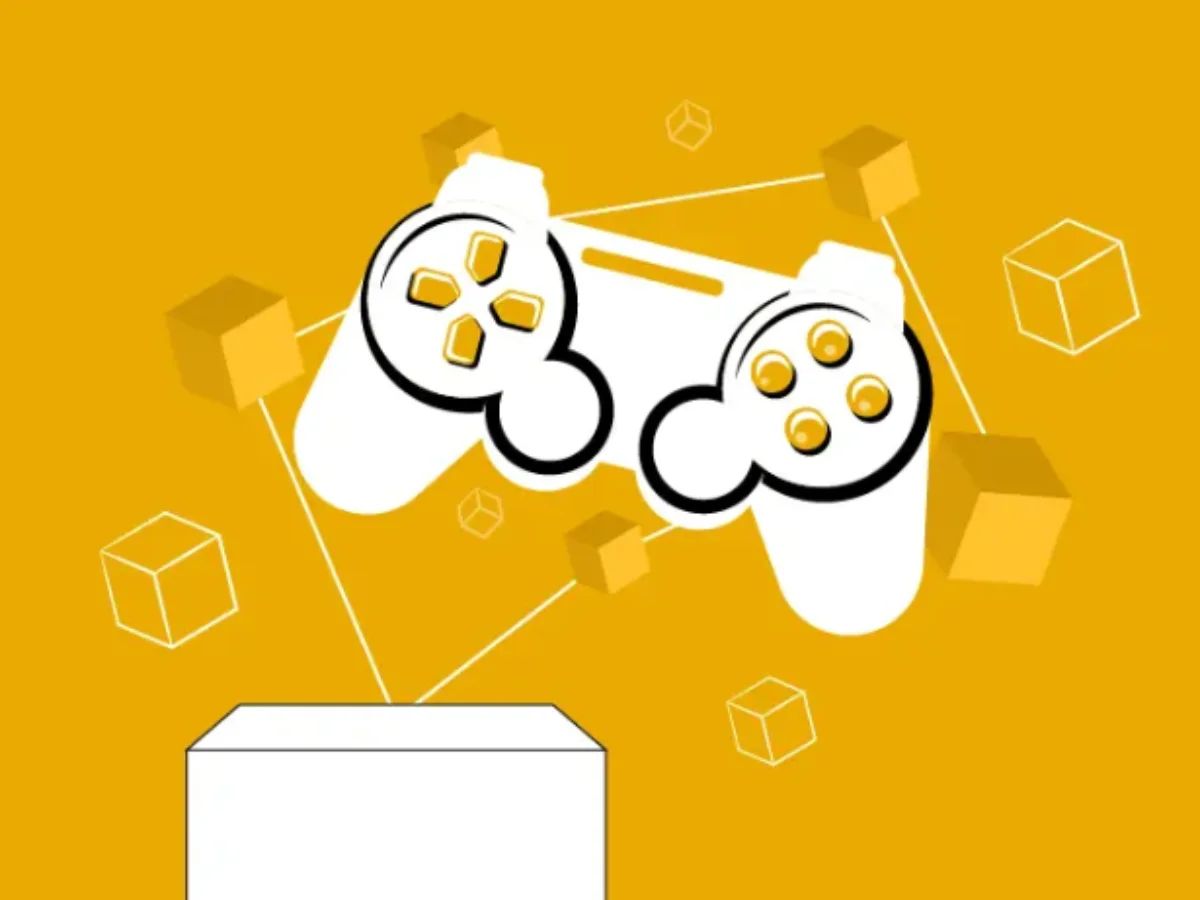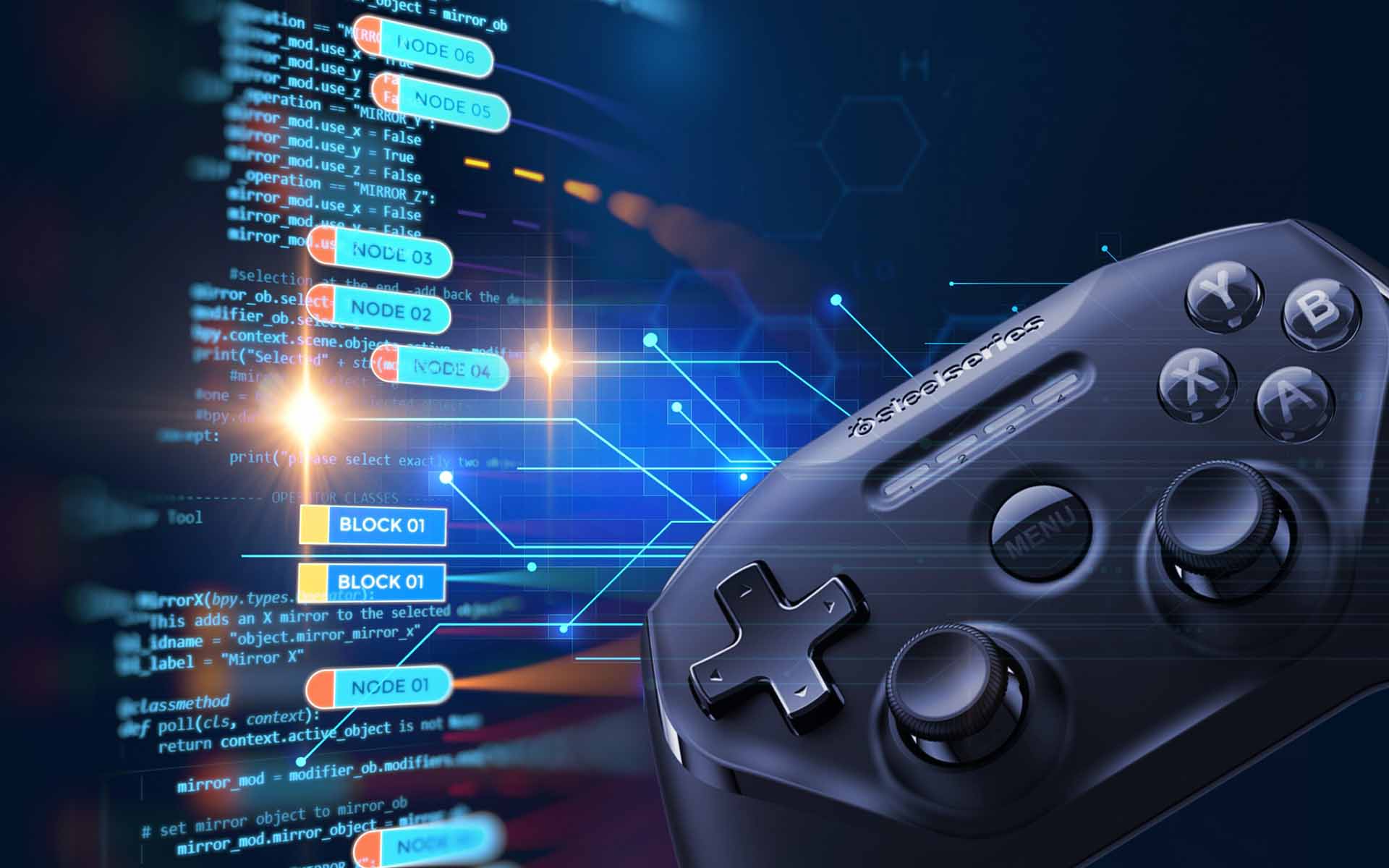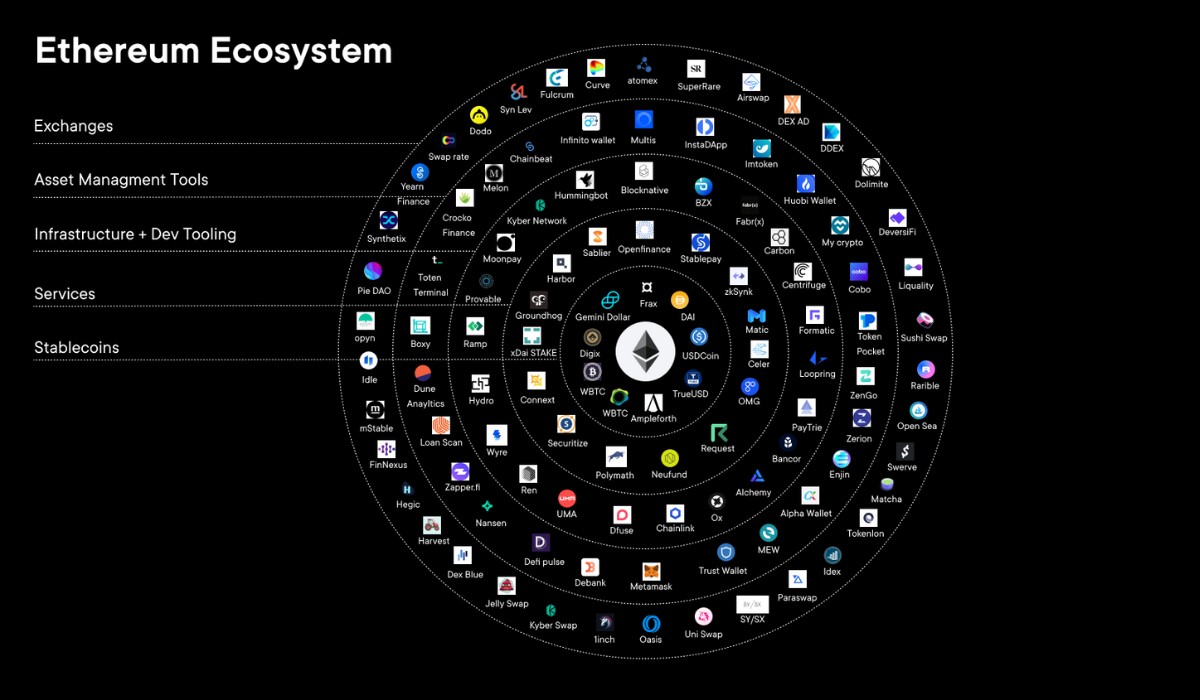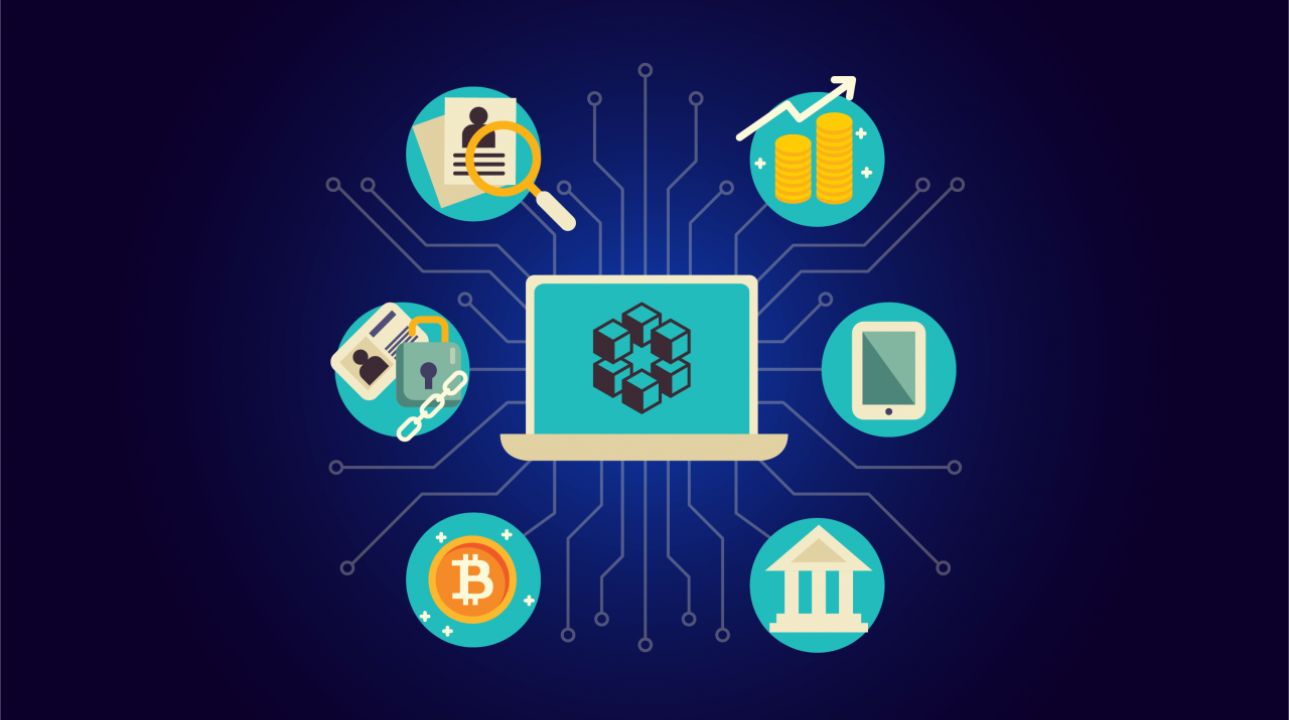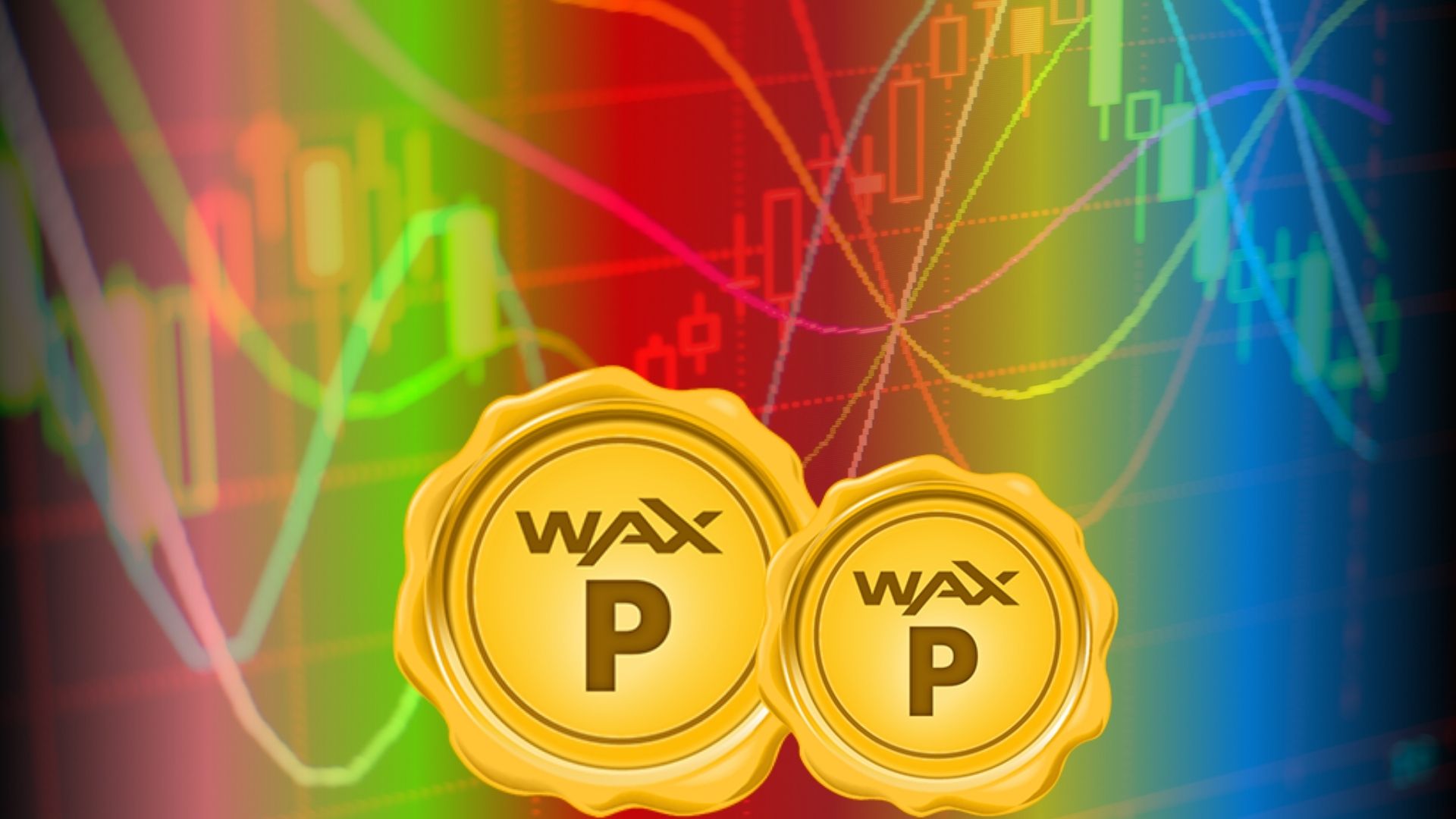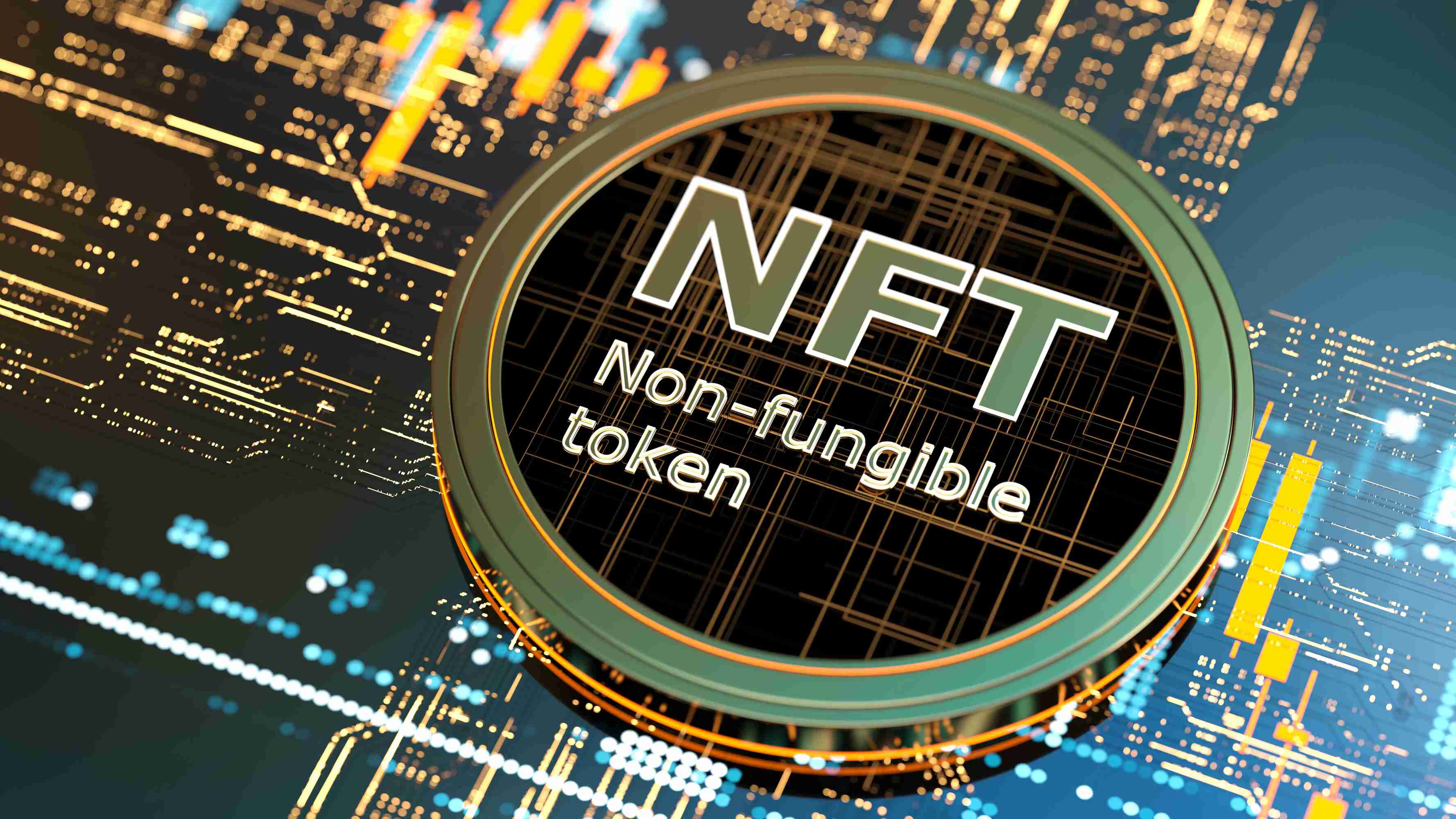Introduction
Welcome to the exciting world of blockchain games! In recent years, there has been a lot of buzz around blockchain technology and its potential applications. With its decentralized and transparent nature, blockchain has disrupted various industries, from finance to supply chain management. One of the emerging areas where blockchain is making a significant impact is in the gaming industry.
But what exactly is a blockchain game? How does it work? And why is it gaining popularity among gamers and developers alike? In this article, we will explore the fascinating world of blockchain games, understand their benefits, and delve into the challenges and limitations they face.
First, let’s have a quick overview of what blockchain technology is. Blockchain is a distributed ledger system that records and validates transactions across multiple computers or nodes. Unlike traditional centralized databases, blockchain relies on consensus mechanisms to ensure the accuracy and integrity of the data. It is often associated with cryptocurrencies like Bitcoin, but its potential stretches far beyond digital currencies.
Now, let’s turn our attention to games. Games have been a source of entertainment for centuries, evolving from traditional board games to complex virtual worlds. They provide a way for people to relax, have fun, and immerse themselves in different narratives or challenges. With the advancement of technology, video games have become a prominent form of interactive entertainment.
So, what happens when you bring blockchain technology and games together? You get blockchain games – a new breed of games that leverage the unique features of blockchain to enhance gameplay, ownership, and monetization aspects. In a blockchain game, the game assets, transactions, and rules are recorded on the blockchain, providing players with true ownership and control over their in-game items.
Blockchain games operate under a decentralized model, where no single entity has absolute control. This means that players can have confidence in the fairness and transparency of the game mechanics, as they can verify the blockchain records themselves. Additionally, blockchain games often incorporate cryptocurrencies or tokens as an integral part of the gameplay, allowing players to earn, trade, or even sell their virtual assets in a secure and transparent manner.
In the next sections, we will explore how blockchain games work, the benefits they offer, and some of the popular examples in the market. We will also discuss the challenges and limitations that blockchain games face and look into the future of this innovative intersection of blockchain and gaming. Let’s dive in!
What is Blockchain?
Blockchain technology is a decentralized system that enables secure and transparent transactional records. At its core, a blockchain is a digital ledger that stores information in a series of blocks, where each block is linked to the previous block using cryptographic algorithms. This chain of blocks creates an immutable and verifiable record of transactions or data.
One of the defining features of blockchain is its decentralized nature. In traditional centralized systems, such as banks or government agencies, there is a central authority controlling and verifying the transactions. However, in a blockchain, there is no central authority. Instead, multiple participants, known as nodes, maintain and validate the network.
Transactions on a blockchain are securely recorded using cryptography. Each transaction is bundled with other transactions into a block. To add a new block to the chain, a consensus mechanism, such as Proof-of-Work or Proof-of-Stake, is used to validate and verify the transactions. Once a block is added, it becomes part of the permanent record and cannot be altered without the consensus of the network.
Blockchain technology brings several benefits. Firstly, it offers transparency. As the blockchain is a public ledger, anyone can view the transactions and verify their authenticity. This transparency helps to build trust, as it ensures that the system is free from manipulation or tampering.
Secondly, blockchain provides security. Since the ledger is distributed across multiple nodes, it is extremely difficult for hackers to compromise the entire network. Additionally, the use of cryptography ensures that transactions are encrypted and can only be accessed by authorized parties.
Another key aspect of blockchain is immutability. Once a transaction is recorded on the blockchain, it cannot be changed or deleted. This immutability ensures the integrity of the data and prevents fraud or manipulation.
Furthermore, blockchain technology offers efficiency and cost savings. By eliminating the need for intermediaries and central authorities, transactions can be processed faster and at lower fees. This can be particularly beneficial in industries such as finance, where transactions often involve multiple intermediaries and lengthy settlement periods.
Overall, blockchain technology has the potential to revolutionize various industries by providing a secure, transparent, and efficient way to record and verify transactions. Its decentralized nature and unique features make it a powerful tool for applications beyond cryptocurrencies, including the realm of gaming.
What is a Game?
A game is an interactive form of entertainment that engages players in a set of challenges, rules, and objectives. It can be played individually or in multiplayer mode, taking various forms such as video games, board games, card games, or sports. Games provide an immersive experience that allows players to have fun, exercise their skills, and experience a sense of achievement.
Games typically have several key elements. Firstly, there is a goal or objective that players are trying to achieve. This could be reaching a certain score, completing a quest, winning a competition, or solving a puzzle. The goal creates a sense of purpose and direction for the player.
Secondly, games have rules that define the boundaries and constraints of the gameplay. These rules dictate what actions are permissible or prohibited and govern the interactions between players and the game environment. Rules add structure and fairness to the game, ensuring a level playing field for all participants.
Thirdly, games involve challenges that players must overcome to achieve the desired outcome. These challenges can be in the form of puzzles, obstacles, opponents, or time constraints. The difficulty and complexity of the challenges may vary, providing different levels of engagement and skill requirements.
Interactivity is a fundamental aspect of games. Unlike passive forms of entertainment like watching a movie or reading a book, games require active participation and decision-making from the players. The actions taken by the players directly impact the outcome of the game, making it an engaging and dynamic experience.
Games also provide feedback mechanisms to inform players of their progress and performance. This feedback can be in the form of scores, rankings, rewards, or visual/audio cues. Feedback reinforces the players’ actions and provides motivation to continue playing and improving their skills.
Additionally, games often include elements of storytelling and immersion. They create virtual worlds, characters, and narratives that captivate players’ imaginations and emotions. Through compelling storytelling, games can transport players to different realms, allowing them to experience unique adventures and develop connections with virtual characters.
In summary, games are interactive forms of entertainment that involve challenges, rules, objectives, interactivity, and feedback. They provide a platform for players to exercise their skills, immerse themselves in virtual worlds, and experience a sense of achievement. Understanding the nature of games is crucial to appreciating the innovation and potential that blockchain games bring to the gaming industry.
What is a Blockchain Game?
A blockchain game is a type of video game that leverages blockchain technology to enhance gameplay, ownership, and monetization aspects. In a traditional video game, players often have limited control and ownership over in-game assets or items. However, in a blockchain game, the game assets, transactions, and rules are recorded on a blockchain, allowing players to have true ownership and control over their virtual items.
One of the key features of a blockchain game is its decentralized nature. Unlike centralized games where a game studio or publisher has complete control over the game’s mechanics and assets, a blockchain game operates on a decentralized network of computers or nodes. This decentralization ensures that no single entity has absolute control, providing players with greater trust and transparency in the game environment.
Another important aspect of a blockchain game is the use of cryptocurrencies or tokens. Many blockchain games incorporate their native cryptocurrency or token as an integral part of the gameplay. These tokens can represent in-game assets, such as weapons, collectibles, or virtual real estate. Players can earn, trade, or even sell these tokens in a secure and transparent manner, enabling real-world value to be associated with virtual items.
Blockchain games also introduce the concept of provable fairness. As the game data is recorded on a blockchain, players can independently verify the authenticity of the game’s outcomes and mechanics. This level of transparency helps to prevent cheating and ensures a more fair and trustworthy gaming experience.
Furthermore, blockchain games often embrace the concept of interoperability. This means that in-game assets or tokens can be transferred or used across different games or platforms. For example, a sword earned in one blockchain game could be used in another compatible game. This interoperability opens up new possibilities for players to explore and leverage their virtual assets beyond a single game, creating a more dynamic and interconnected gaming ecosystem.
Overall, a blockchain game combines the benefits of blockchain technology, such as decentralization, true ownership, and provable fairness, with the immersive and interactive nature of traditional video games. By leveraging blockchain technology, developers are able to create innovative gaming experiences that empower players and provide new opportunities for creativity, ownership, and value generation.
How does a Blockchain Game work?
Blockchain games operate on a decentralized network that utilizes blockchain technology to record and validate game data, transactions, and ownership of in-game assets. Here’s a step-by-step breakdown of how a blockchain game typically works:
- Blockchain Integration: The game developer integrates the blockchain technology into the game’s infrastructure. This involves creating smart contracts or utilizing existing blockchain platforms to handle game data and transactions.
- Tokenized Assets: The game designer assigns unique tokens or digital assets to various in-game items. These assets can represent anything from characters, weapons, or virtual real estate. Each token is stored on the blockchain, enabling secure ownership and transferability.
- Decentralized Gameplay: Players connect to the game through their preferred device or platform. Since blockchain games are decentralized, players can interact with the game directly without relying on a centralized server.
- Validation and Consensus: When a player performs an action or completes a task in the game, such as acquiring a new item or completing a level, this information is recorded as a transaction on the blockchain. The transaction needs to be validated and added to the blockchain with the consensus of the network’s nodes, ensuring a secure and tamper-proof record of the event.
- Ownership and Trade: As players progress in the game, they earn or acquire in-game assets as tokens on the blockchain. These tokens can be stored in digital wallets and are fully owned by the players. With true ownership, players can freely trade, sell, or even use their assets in other compatible blockchain games.
- Economy and Rewards: Many blockchain games have their native cryptocurrencies or tokens that serve as the primary form of value exchange. Players can earn or buy these tokens, which can be used to purchase in-game items, unlock features, or participate in competitions. The decentralized nature of blockchain ensures transparency and security in token transfers and rewards.
- Provable Fairness: Blockchain games provide provable fairness by allowing players to independently verify the integrity of the game’s mechanics and outcomes. Since the game data is recorded and stored on the blockchain, players can audit the transactions and ensure that the game operates in a fair and unbiased manner.
By utilizing blockchain technology, these games offer a unique and innovative gaming experience. The decentralized nature of blockchain ensures player ownership and control, while provable fairness and transparent transactions enhance trust among players. The integration of tokens, cryptocurrencies, and interoperability opens up new possibilities for gamers to engage with their virtual assets in a secure and dynamic gaming ecosystem.
Benefits of Blockchain Games
Blockchain games provide several distinct benefits that set them apart from traditional video games. Here are some of the key advantages of blockchain games:
- True Ownership: In blockchain games, players have true ownership of their in-game assets. Unlike traditional games where items are owned and controlled by the game developer or publisher, blockchain games utilize non-fungible tokens (NFTs) or unique digital assets that are recorded on the blockchain. This gives players the freedom to buy, sell, and trade their virtual items as they wish, even across different games or platforms.
- Secure Transactions: Blockchain technology ensures secure and transparent transactions within games. The use of smart contracts on the blockchain enables trusted and automated transactions, eliminating the need for intermediaries. Players can confidently trade or sell their assets without worrying about fraud or scams, as the blockchain provides a secure and immutable record of ownership and transactions.
- Provable Fairness: Transparency and fairness are vital in gaming, and blockchain games deliver on this front. The decentralized nature of blockchain allows players to independently verify the game’s mechanics and outcomes. By recording game data on the blockchain, players can audit the transaction history and ensure that the game operates with provable fairness, without any possibility of manipulation or cheating.
- Interoperability: One of the exciting features of blockchain games is interoperability. In-game assets and tokens can be transferred or used across different compatible games or platforms. This means that players can take their hard-earned items from one game and utilize them in another, creating a seamless and interconnected gaming experience. Interoperability promotes a thriving economy and encourages collaboration among game developers.
- Economic Opportunities: Blockchain games introduce new economic opportunities for players. In many blockchain games, virtual assets or tokens hold real-world value, and players can trade or sell them for cryptocurrencies or fiat currencies. This opens up avenues for players to earn a income through gaming, turning their skills and dedication into a potential source of revenue.
- Community Engagement: The decentralized nature of blockchain games fosters a strong sense of community and collaboration among players. As ownership of assets is transparent, players can form communities, create shared economies, and collaborate on in-game projects. Blockchain games often encourage player involvement in the decision-making process and allow users to contribute to the development and evolution of the game ecosystem.
These benefits highlight the transformative potential of blockchain games. By combining the advantages of blockchain technology – such as true ownership, secure transactions, provable fairness, interoperability, economic opportunities, and community engagement – blockchain games offer a new level of empowerment to players and are reshaping the gaming landscape.
Examples of Popular Blockchain Games
The world of blockchain gaming is rapidly expanding, with several popular titles gaining traction among players. Here are a few examples of noteworthy blockchain games:
- CryptoKitties: CryptoKitties is one of the earliest and most well-known blockchain games. It allows players to collect, breed, and trade virtual cats. Each cat is a unique non-fungible token (NFT), recorded on the blockchain. With a focus on rarity and breeding genetics, CryptoKitties introduced the concept of digital collectibles and the mainstream adoption of blockchain games.
- Axie Infinity: Axie Infinity is a blockchain-based game that combines elements of pet-raising, battling, and trading. Players can collect and breed fantasy creatures called Axies, which possess distinctive traits and abilities. These Axies can be battled against other players in strategic gameplay, with rewards and in-game tokens attributed based on performance. Axie Infinity has gained a substantial player base and has become one of the top blockchain games in terms of user engagement.
- Gods Unchained: Gods Unchained is a blockchain-based trading card game that utilizes NFTs to represent unique and tradable cards. Drawing inspiration from traditional trading card games like Magic: The Gathering, Gods Unchained allows players to build strategic decks and compete against each other. The ownership of cards is recorded and secured on the blockchain, providing players with true ownership and the ability to trade their cards freely.
- The Sandbox: The Sandbox is a blockchain-powered virtual world where players can build, own, and monetize their creations. It offers a user-friendly platform for players to design and publish their own games, experiences, and virtual assets using its intuitive voxel-based editor. The ownership of virtual lands and assets is recorded on the blockchain, allowing players to trade and profit from their creations in a decentralized marketplace.
- Decentraland: Decentraland is a decentralized virtual reality platform powered by blockchain technology. It allows users to create, explore, and interact with a virtual world. Within Decentraland, users can purchase virtual land, build and monetize various experiences and assets, and engage in social activities. The platform utilizes NFTs to represent land and in-game items, giving users true ownership and control over their digital assets.
- Immutable X: Immutable X is a layer 2 scaling solution for Ethereum-based blockchain games. It aims to solve the scalability and high transaction fees issues by leveraging a technology called zero-knowledge proofs. Immutable X enables fast and secure transactions, allowing blockchain games to achieve mainstream adoption without compromising decentralization and the security of the underlying Ethereum network.
These examples highlight the diversity and innovation in the blockchain gaming space. From collectibles to trading card games and virtual worlds, these popular blockchain games have created immersive experiences, empowered players with true ownership, and demonstrated the transformative potential of blockchain technology within the gaming industry.
Challenges and Limitations of Blockchain Games
While blockchain games offer exciting possibilities, they also face some challenges and limitations. Here are a few key factors that present hurdles for the widespread adoption and success of blockchain games:
- Scalability: Blockchain networks, particularly those based on Ethereum, can face scalability issues when handling a large number of transactions. The limited processing capacity of the blockchain can lead to slower transaction times and higher fees, which can hinder the seamless and real-time gameplay experience that players expect.
- User Experience: The user experience of blockchain games can sometimes be cumbersome and unfamiliar for mainstream gamers. Activities such as setting up digital wallets, managing private keys, and understanding blockchain terminologies may present barriers to entry and create a learning curve for new players.
- Environmental Impact: Blockchain games that rely on proof-of-work consensus mechanisms can consume significant amounts of energy, contributing to environmental concerns. However, emerging solutions like proof-of-stake and layer 2 scaling solutions aim to address these sustainability challenges in the long run.
- Regulatory Uncertainty: As blockchain games involve virtual assets and tokenized economies, regulatory frameworks across different jurisdictions may vary or be ambiguous. This creates uncertainty and regulatory challenges for developers and players, particularly in terms of taxation, asset transferability, and legal protections.
- Integration and Interoperability: Achieving seamless integration and interoperability among different blockchain games and platforms is a complex task. Ensuring compatibility and smooth asset transfers between games, especially when each game has its unique tokens or standards, requires standardized protocols and collaboration among developers.
- Perception and Community: Blockchain games still suffer from a perception problem due to the association with speculative investments and scams in the cryptocurrency space. Building trust and fostering a positive community are crucial for blockchain games to overcome these biases and attract a broader audience.
- Economic Imbalance: In some blockchain games, early adopters or players with significant resources may hold a disproportionate advantage due to their ownership of rare or valuable in-game assets. This economic imbalance can lead to exclusion or challenges for new or casual players who may find it difficult to compete in the game ecosystem.
Despite these challenges, developers and the blockchain gaming community are actively working to address these limitations and push the boundaries of the technology. Through research, innovation, and collaboration, the industry aims to enhance scalability, improve user experience, navigate regulatory landscapes, and foster a vibrant and inclusive ecosystem for blockchain games.
The Future of Blockchain Games
The future of blockchain games is promising, with significant potential for growth, innovation, and mainstream adoption. Here are several key developments and trends that indicate the direction of the industry:
- Scalability Solutions: Scaling solutions, such as layer 2 protocols and sidechains, are being developed to address the scalability challenges of blockchain networks. These solutions aim to increase transaction throughput and reduce fees, enabling blockchain games to handle larger player bases and complex gameplay mechanics.
- Improved User Experience: Developers are working on enhancing the user experience of blockchain games to make them more accessible and intuitive for mainstream players. Simplified onboarding processes, user-friendly wallets, and seamless integration with existing gaming platforms are being prioritized to remove barriers and provide a smooth transition for players.
- Emergence of Play-to-Earn: Play-to-earn models are gaining momentum in the blockchain gaming space. These models allow players to earn real-world value and income by participating in blockchain games. By rewarding players with tokens or currencies that have real-world value, play-to-earn systems provide economic incentives and blur the lines between gaming and work.
- Cross-Game Interoperability: Interoperability among blockchain games is a significant focus for developers. Efforts are being made to establish standards and protocols that enable cross-game asset transfers, collaborations, and shared virtual experiences. This interoperability will create a thriving metaverse where players can seamlessly navigate through different blockchain games and universes.
- Enhanced Graphics and Immersion: As the technology evolves, blockchain games are expected to deliver more impressive graphics and immersive experiences. With advancements in virtual reality (VR) and augmented reality (AR), players can anticipate a new level of immersion, bringing these virtual worlds to life in a captivating and visually stunning manner.
- Integration with Web3: Web3 or the decentralized web is a vision where blockchain technology and decentralized applications (dApps) seamlessly connect with traditional web platforms. The integration of blockchain games with Web3 will enable easier access, cross-platform compatibility, and broader exposure to a mainstream audience.
- Regulatory Clarity: Regulatory frameworks for blockchain games are gradually taking shape. Governments and regulatory bodies are recognizing the potential of blockchain technology and working towards establishing clear guidelines and protections for players and developers. Increased regulatory clarity will instill confidence and foster the growth of the blockchain gaming industry.
The future of blockchain games is not limited to the gaming industry alone. The convergence of blockchain with other emerging technologies like artificial intelligence, Internet of Things (IoT), and decentralized finance (DeFi) will further expand the possibilities and create more interactive and immersive experiences for players.
As blockchain technology continues to evolve and mature, it is expected that blockchain games will become an integral part of the gaming landscape, offering players true ownership, innovative gameplay mechanics, and opportunities for economic empowerment. With ongoing advancements and the collective efforts of developers and the community, the future of blockchain games holds the potential to redefine how we play, create, and interact in virtual environments.
Conclusion
Blockchain games have emerged as a fascinating intersection of blockchain technology and gaming, offering players new levels of ownership, transparency, and economic opportunities. These games leverage the decentralized nature of blockchain to enable true ownership of in-game assets, provable fairness, and secure transactions.
The benefits of blockchain games, such as true ownership, secure transactions, provable fairness, interoperability, economic opportunities, and community engagement, showcase the transformative potential of this innovative genre. These games empower players, foster creativity, and create new avenues for collaboration and economic growth within virtual worlds.
However, blockchain games also face challenges and limitations, including scalability concerns, user experience hurdles, regulatory uncertainty, and economic imbalances. Nevertheless, the industry is actively working to address these challenges through technological advancements, improved user interfaces, growing regulatory clarity, and community collaboration.
Looking ahead, the future of blockchain games is bright. Solutions for scalability, enhanced user experience, cross-game interoperability, and improved graphics are on the horizon. The emergence of play-to-earn models and integration with Web3 will redefine the relationship between gaming and work, while regulations will bring stability and trust to the ecosystem.
As blockchain technology continues to evolve and mature, blockchain games will play an increasingly prominent role in the gaming landscape. They have the potential to redefine how we play, create, and interact in virtual environments, offering players unprecedented ownership and creative freedoms.
In conclusion, blockchain games hold immense promise for the future of gaming. With their unique combination of blockchain technology, decentralized ownership, and immersive gameplay experiences, these games are poised to revolutionize the industry and create new opportunities for players worldwide.







